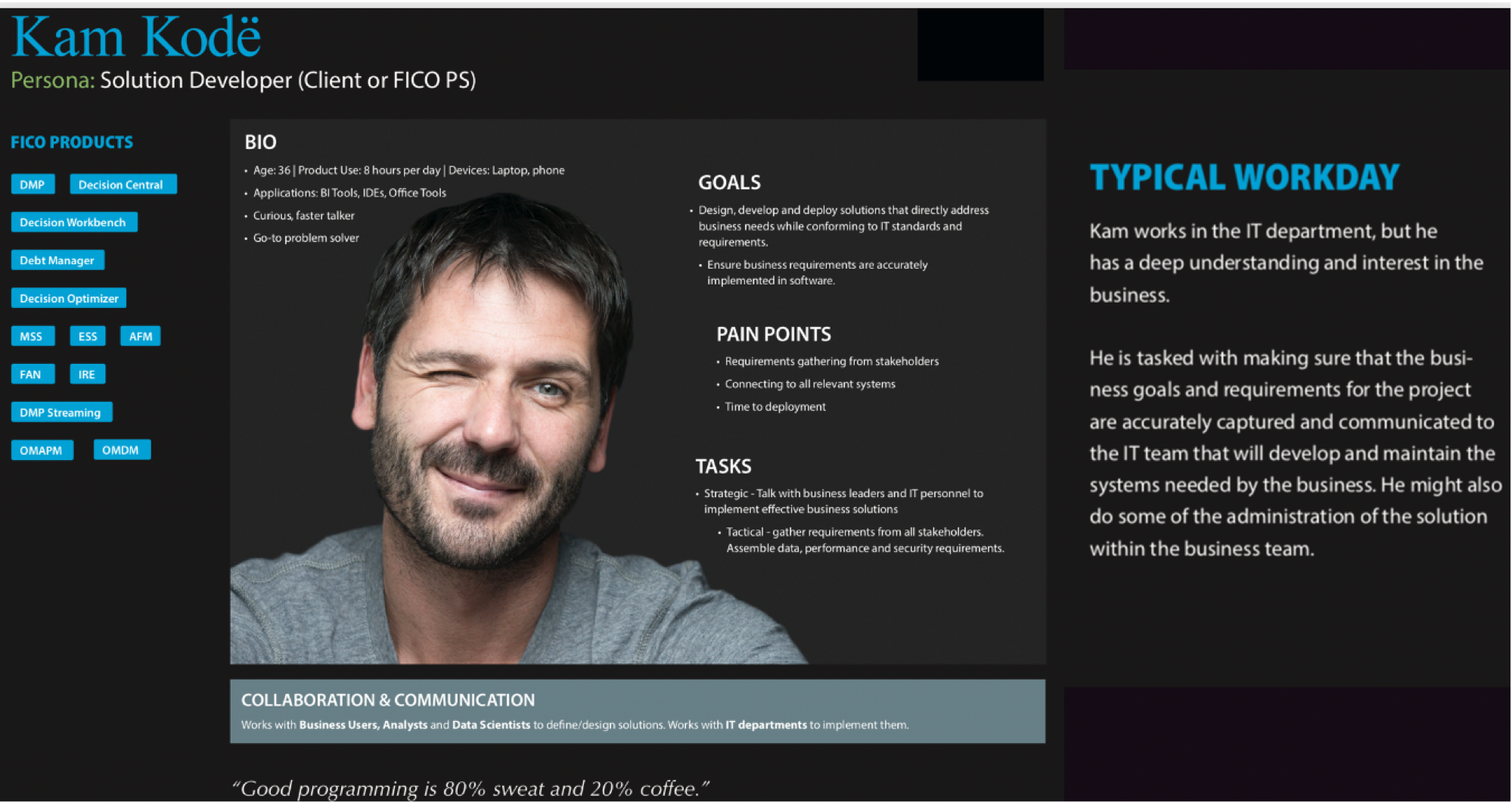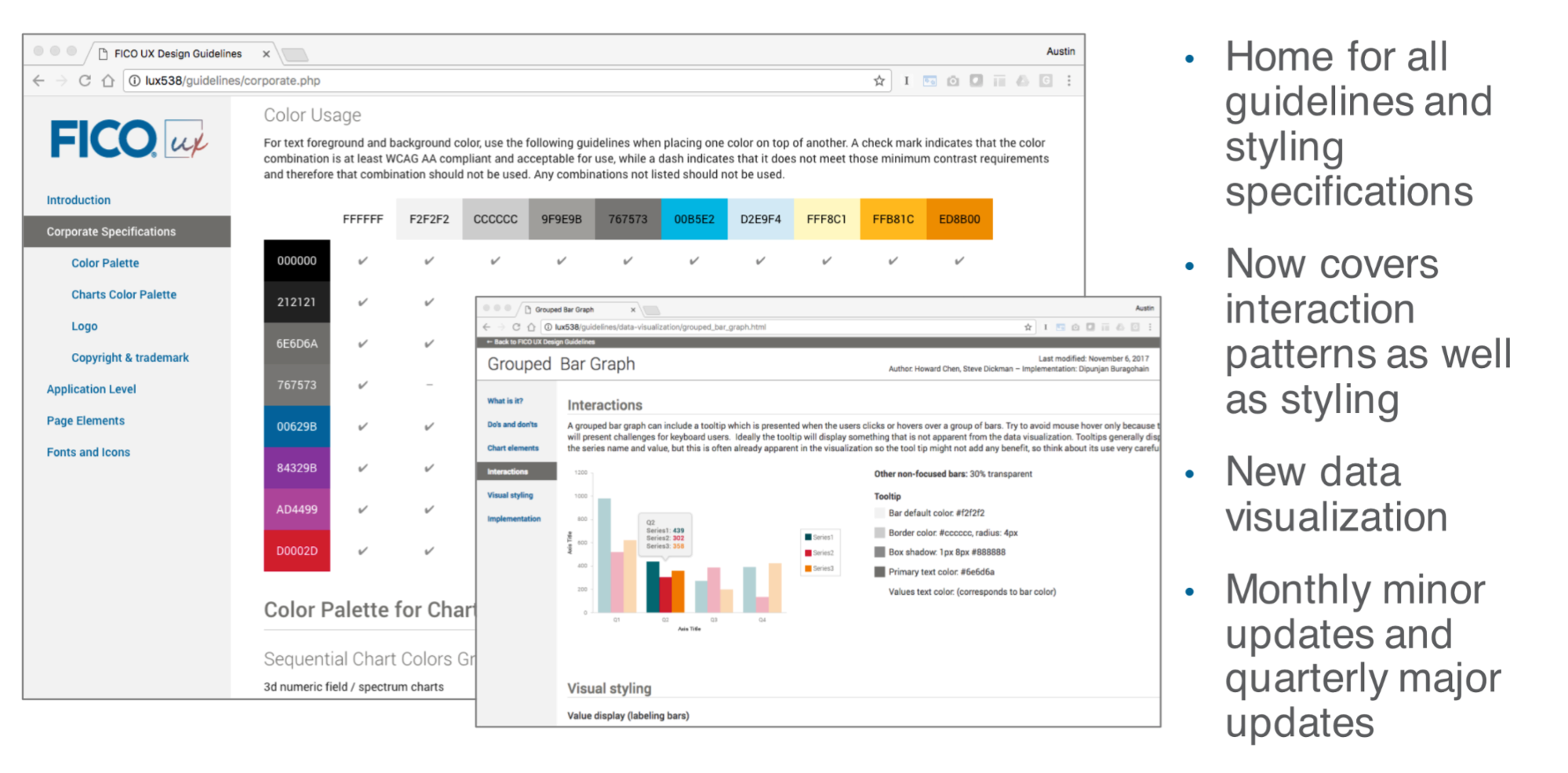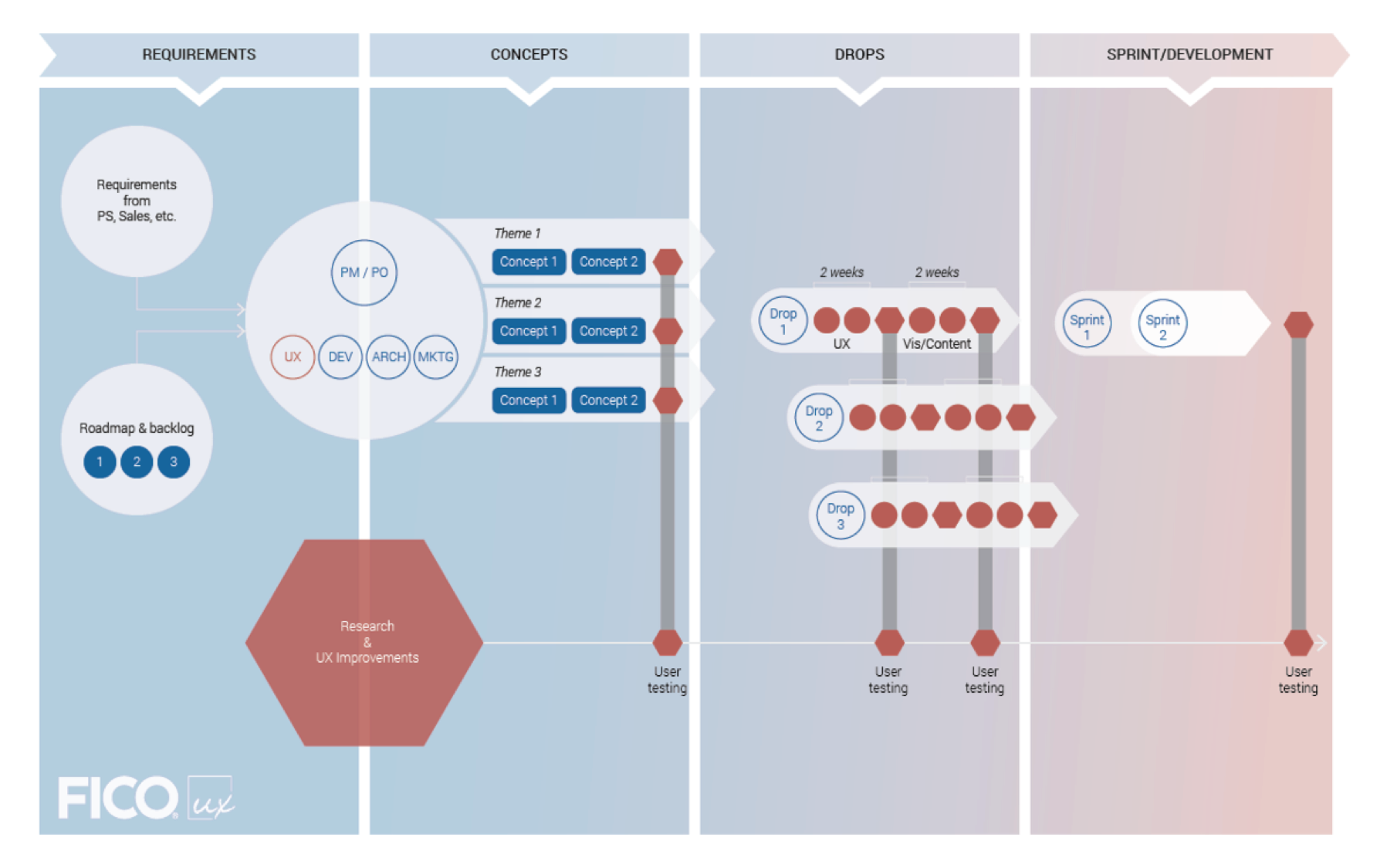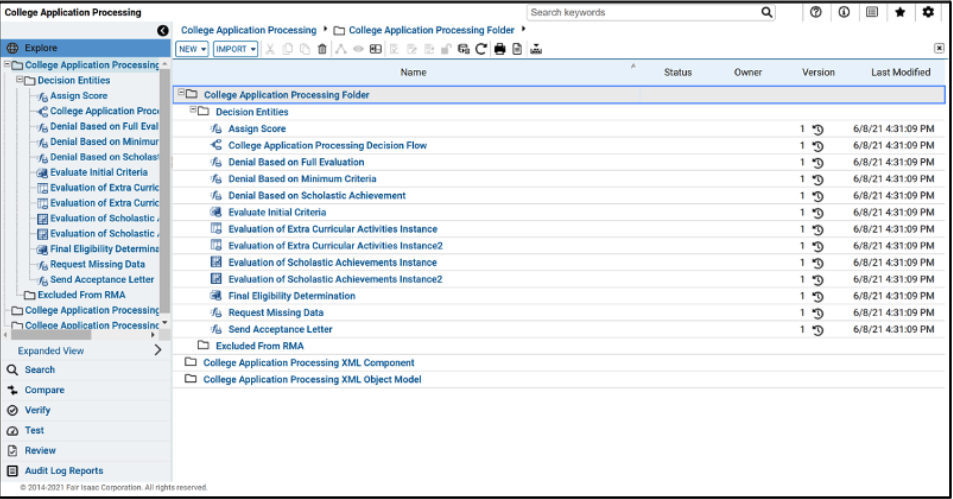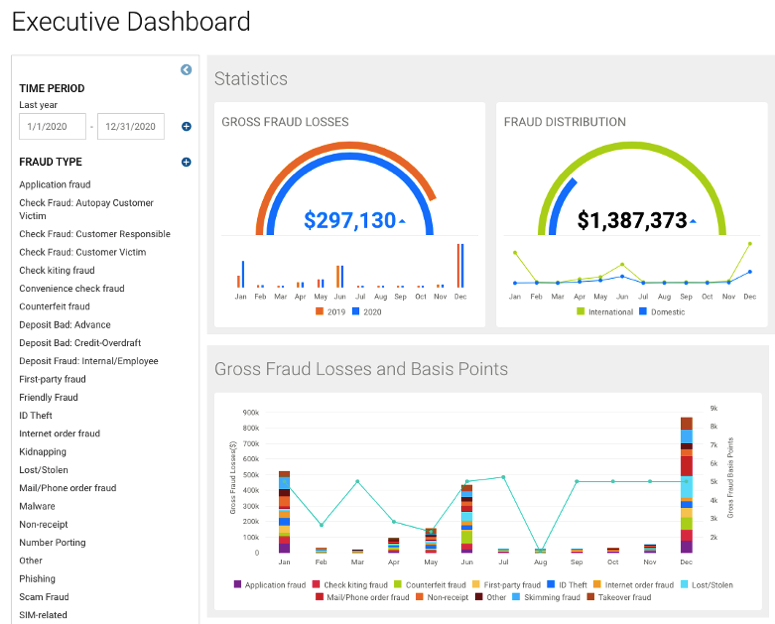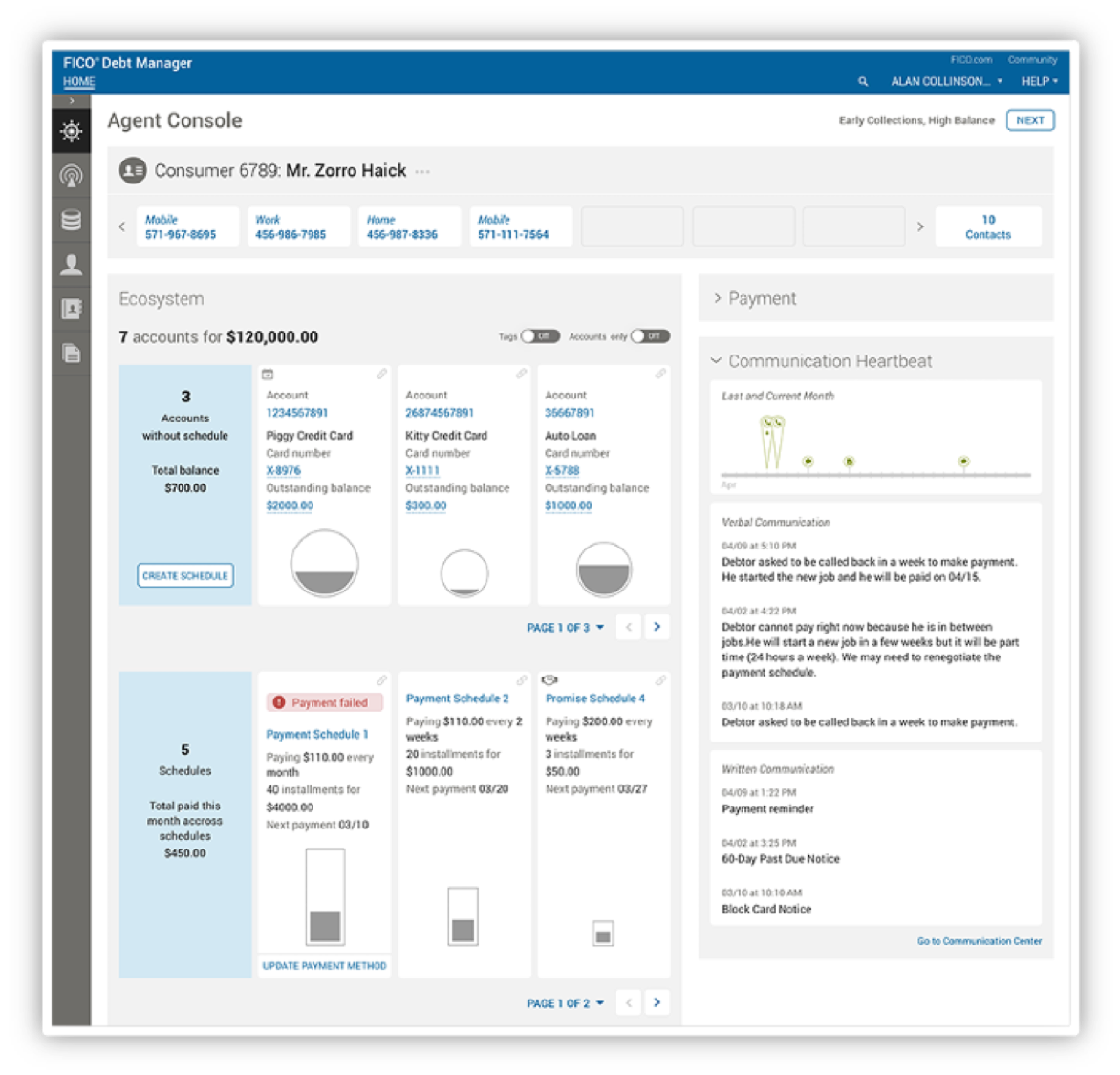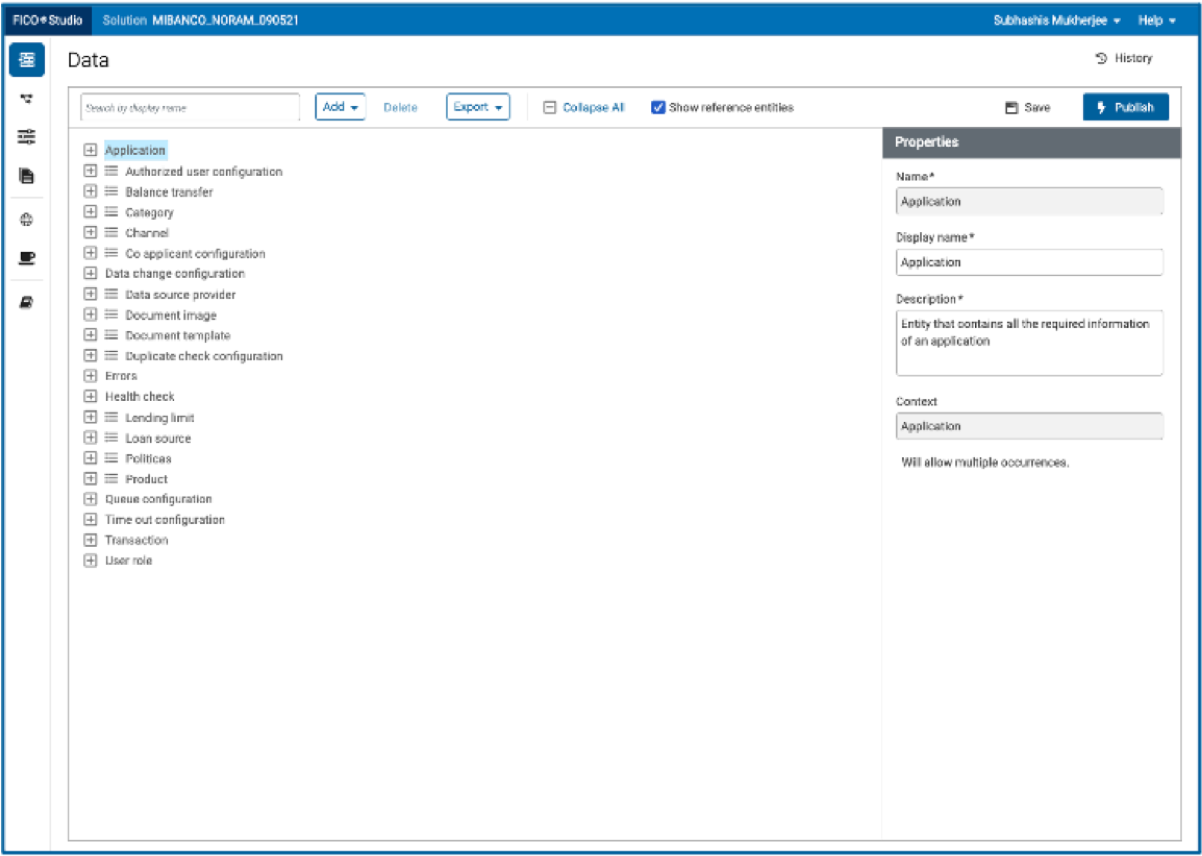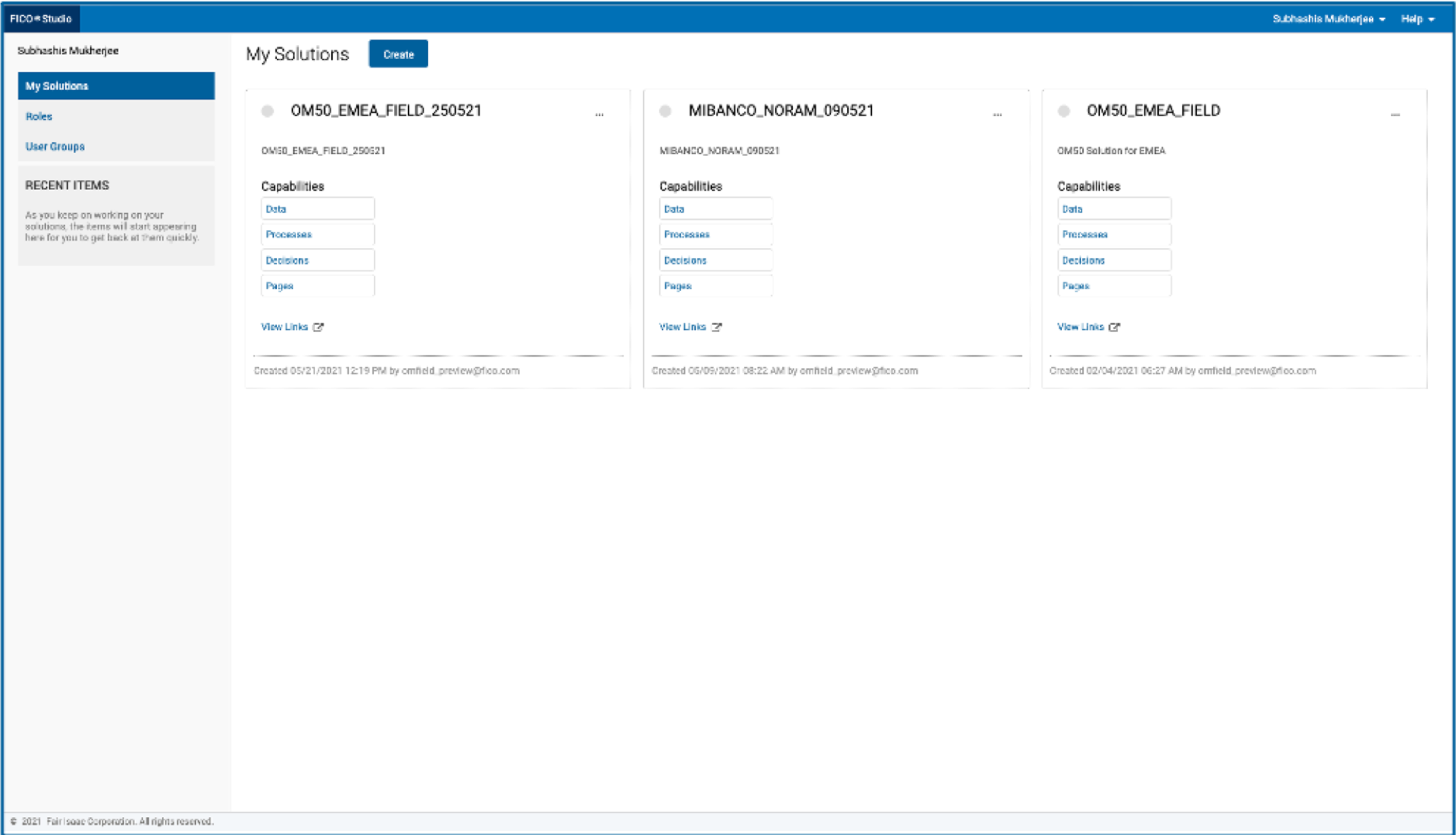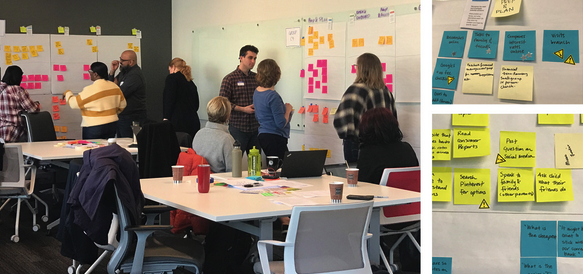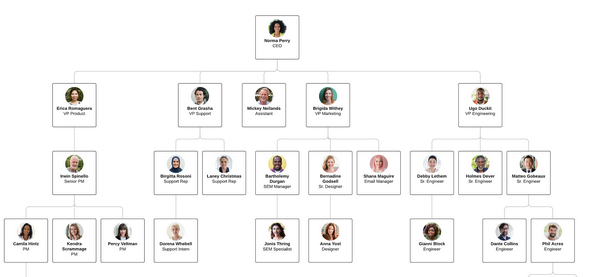FICO - The Story
FICO provides fraud, analytics, orchestration and decisioning products to protect businesses on a cloud delivered platform. The FICO score is created using the products developed by the FICO Platform team. AI has been a core part of all of the products for decades.
Portfolio of over 10 products including Falcon, Decision Modeler, Analytics Workbench, Debt Manager and Optimization suite.
Key UX Strategy: move from on-premise, siloed products to a platform of connected capabilities to serve the needs of the end to end customer experience.
Pain points: too many products that didn’t work end to end, different technology, on premise and cloud, too expensive, inconsistent UX, teams working in silos and no UX research.
What FICO Needed
UX Strategy
UX Team
Design System and Team
Research
What I Delivered…
Single Unified UX Strategy
UX Strategy adopted as part of platform vision
single corporate style guide
shared FICO Design Principles
metrics and analytics for UX impact on the products
UX added to the SAFE practice
Fully staffed UX team
grew the team from 13 to 70+ UX professionals
incorporated content design and design systems into UX
created the first UX career ladders for professional development
over 90% approval rating for all 6 years with FICO
developed an internal UX training program - UX Advocate
Central Design System team
created the business case and secured funding for design system team - UI developers and designers
IRIS system - WCAG 2.2 compliant
all platform product teams using IRIS 1 year after release
increased development efficiency and approval ratings
FICO Research program
created the first customer research council
established the Research Operations team - including the development of a research portal with all research available to teams
all new designs tested before added to JIRA EPICs
2016-2021 - Research Operations
Outdated siloed personas
No UX research
Pre-2016
2017
2020
Shared corporate personas
FICO UX Customer Council
2016-2021 - FICO UX Organization
2018
2016
Siloed UX Team
Fully staffed UX Team
2016-2021 - FICO Design System
FICO single style guide
2016
2020
FICO IRIS Design System 1.0
FICO Design System - IRIS
As part of the progress towards creating a consistent experience across the portfolio, I led the UX team on a project to identify all of the UX components used in the top applications. The project identified, classified and categorized all of the components into a single location where as a team we identified the duplication of components and conducted multiple design reviews to create a standard set of components and patterns.
The corporate brand guidelines were too limited in options for our style guide. We create a new expanded styleguide that would support efforts around new UX features such as data visualization and graph analysis tools. We worked with our team in the corporate marketing group to add more color and font options to our style guide. In addition, the use of icons across the product line had become unmanageable. The team went through over 400 icons and created a single library of less than 60 icons with directions on use for each.
After a year of using a single style guide and moving towards single UX components (based off Material components), I decided to create a business case to create a central Design System team. The product teams had few or no front end developers that could easily create the new standard UX components. Each development team had their own code to implement the components. We needed a more efficient method of building product UX. I worked with our CTO to get the budget and headcount to hire a lead for the FICO Design System (IRIS) and 4 front end developers. The new lead came onboard in late 2019 and hired the development team. We worked with our Architect team on the platform to determine the technology to use for the design system. The team agreed that Angular was the best choice for our products and the work began. The UX team used Axure for our design tool and had already created the design system with all of the components and patterns. The UX Design system team worked with the Angular team to create the top priority 1.0 components for the first release of IRIS.
The Impact on the organization
IRIS provided our UX designers and the development organization with a set of tools to create new features in a more efficient, consistent and economical manner. The UX team members continued to add new components to the roadmap for IRIS. The IRIS team serves as repository support for the entire development organization. They have outreach programs and a communication process that ensure that the product teams have access to the central repository and can make requests for new components as needed. There was no way to measure front end UI development team efficiencies before IRIS. However, feedback from the UI developers showed higher satisfaction scores on the new central team and tracking of use of IRIS components through analytics provided positive adoption metrics.
2016-2021 - FICO Design Process
Agile design process
2016
2021
SAFE with rolling wave
2016-2021 - FICO product progression
Indvidual products -Legacy UX
Pre-2016
2017
Central Style guide
2021
Single UX - Design System
Data Visualization
As part of the design of the new experiences for the FICO Studio components, the Case Management tool - Falcon X - included a new data visualization feature as a Dashboard based on the role of the users.
Data visualization had previously been done using an expensive 3rd party license of Tableau. As part of the journey mapping exercise in the creation of FICO Studio, the Dashboard for the Case Management tool needed to support a variety of personas with different needs.
Through multiple iterations of the designs with the target end users from the FICO Customer Council - the UX team designers developed a configurable Dashboard that allowed the users to hide components and add components to their personalized view. In addition, the ability to save the Dashboard as a PDF to use as a report was added to the Falcon X Dashboard.
2016-2021 - FICO - Before and After
Legacy Agent console
Before
After
New Agent console
2020-2021 - FICO - FICO Studio
2020-2021
FICO Studio - Single portal to create decision software solution
FICO Studio - Case Study
Using Design Thinking - UX Research and Design Iteration
FICO Studio was the outcome of a collaborative effort by UX, Product Management, Professional services and engineering. The project started with a research project to define the target FICO personas and conduct contextual interviews with the users to determine their use of the products to complete their tasks. The research included both internal users from FICO professional services team as well as customers from the FICO Customer Council.
Once the data was collected, I led a series of workshops with the UX, Product Management, Architecture, Development leads from 7 different product teams to define the end to end experience for the customers based on user role/permission and product package. The result of the workshops included a concept design for FiCO studio, PM roadmaps, Architecture documents and Development EPICS.
Multiple UX designers, PM and Development teams worked on the first version of FICO Studio. Throughout the process, continual user research was conducted as new features were added to the Studio. In addition to the usability studies, Pendo was selected as the analytic tool to monitor the user of FICO Studio by users when the product came to market.
Development of a new Product
Packaging of the feature capabilities was a crucial component in the design of the new platform. The benefit of the contextual research provided the PM team with the data that most customer implementations followed a similar pattern based on the company vertical - Fintechs had a similar product package and configuration pattern just as Telco had their similarities. This insight from the UX led research developed the template approach to start a new product that allowed a customer to start with a template in FICO Studio - then customize with their own business needs.
Culture change
Moving from siloed teams to a platform with integrated components required an organizational change and architecture changes. The UX team members on the Studio project became a sub team within the organization and worked closely to align the design work to deliver the components to their teams.
As part of the reorganization, I worked with the leadership team to conduct Persona workshops that included how to use the Studio personas in their own work. Examples of how to create feature requirements using the personas, how to write EPICS and user stories in Jira as the persona. The UX team led regular design reviews with extended stakeholders and all user testing sessions were open to the entire Studio organization.




